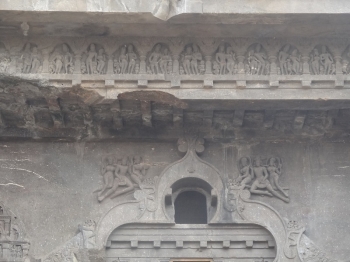Anyone familiar with Buddhism must be familiar with the P?li term “Dhamma” or the Sanskrit term “Dharma”. Leaving aside all the philosophical connotations implied by the term Dhamma, most would understand it as meaning the teachings of the Buddha or simply as Buddhism. That is fine. But the teaching of the Buddha is so vast that a beginner cannot remain unconfused where to begin with. Of course, Buddha did say that his Dhamma was excellent at the beginning, excellent at the middle and excellent at the end. So, technically, one can start from anywhere. But questions like how to be harmonious and happy through the application of the Dhamma need specification. In other words, one must be able to identify the particular aspect of the Dhamma in the context of what is asked, in this case how to be harmonious and happy.
For many practicing Buddhists, the practice of the Dhamma is none other than the practice of meditation. And indeed this is the essence of Buddhism. However, it is very misleading to generalize Buddhist meditation as only sitting cross legged, eyes closed, not moving so on and so forth. Of course that is the official prescription and also the narrowest sense of the term. We should realize that we are disharmonized because our mental energies and efforts are scattered. Hence, the harmonization and integration of these scattered mental energies and efforts into one mental force (ekaggata-citta) is called meditation. The Buddhist term is bh?van? which actually means repeated cultivation of positive qualities. That is to say, bh?van? is the integration of our scattered mental energies and efforts for the sustainment of our positive qualities and the abandonment of the negative forces. For example, why we cannot sustain the four sublime qualities like love (mett?), compassion (karu??), congratulatory joy (mudit?), and equipoise of mind (upekkh?) is because our mental energies are also distributed among negative forces like lust, hate, delusion, jealousy, miserliness, and restlessness. If these negative forces are predominant, the four sublime qualities cannot blossom. Understandably, in the absence of such positive mental qualities, it is indeed not practical to generate genuine happiness for oneself and to find harmony even within oneself. In the cultivation and sustainment of mett?, karu?? and mudit? in the context of “others”, it is in fact the cultivator who gets the highest benefits, for inner harmony and happiness are abundant and overflowing in such a person. Developing a mind of upekkh? in the context of the eight vicissitudes of life (attha-lokadhamm?) is said to be one of the 38 highest blessings as stated in the Ma?galasutta, where Buddha says, “phu??hassa lokadhammehi, citta? yassa na kampati, asoka? viraja? khema?, eta? ma?galamuttama?” (A mind, when touched by the eight vicissitudes of life, is not shaken, sorrowless, stainless and secure: this is the highest blessing). The eight lokadhammas are:
1.Profit and loss
2.Honor and dishonor
3.Praise and blame and
4.Joy and frustration.
Another important method of being happy and being in harmony within is vipassan? meditation, also called insight or introspection meditation. Again for many vipassan?practitioners, the practice of the Dhamma means the practice of vipassan?. It is to be mentioned here that vipassan? is not an invention of Burmese masters as many might think today.Vipassan? was an integral part of the early Buddhist methods of meditation as prescribed in the P?li Canon. Vipassan? is always coupled with samatha (concentration meditation), mainly because without first having a concentrated mind to a certain level, one cannot practically go deeper into his psych. In simpler terms, samatha can be understood as integration of our scattered mental energies and efforts into one unified mental force (ekaggata-citta), which is a necessary step toward an introspective understanding of the inner working of our six sensory perceptions of eye, ear, nose, tongue, body and mind. In the Mah?vacchasutta of the Majjhima Nik?ya, a new monk who said he has accomplished the disciplinary training rules, requested the Buddha to teach him the Dhammafurther. Buddha replied saying, “In that case, develop these two things further: samatha and vipassan?, for if they are further developed, they lead to the penetration of many elements. The penetration of many elements (anekadh?tupa?ivedha) refers to the six sensory perceptions. In early Buddhism, Buddha often repeated that his claim of omniscience (sabbaññ?ta-ñ??a) was within these six sensory perceptions which constitute the empirical world of experience.
Accordingly, wisdom and happiness were explained in terms of the degrees of penetrating these six senses. Hence, in vipassan? meditation, the emphasis is to observe the ins and outs of our six senses. In other words, in seeing, hearing, smelling, tasting, feeling and thinking, there should only be the “mere act” (kiriy?matta?). In the acknowledgement of “mere act process”, the views of subject and object do not arise. In other words, the views of “I, me and my” do not arise. Indeed, Buddhism teaches that much of the unhappiness, worries and displeasures come about due to our views of I, me and my, what is known in modern psychotherapy as “self-obsession”. In the functions of our six senses, there always arises one of the three reactions: positive/pleasant, negative/unpleasant or neutral. It is a habit for most people to develop attachment and then grasping in what they consider pleasant (sukha) and develop aversion(pa?igha), even hate (r?ga) and displeasure in what they consider as unpleasant (dukkha). But having attachment and grasping in conditioned, hence changing phenomena certainly lead to dukkha, a term meaning deep psychological frustrations. Similarly, developing aversion, hate and displeasure in things we may not consider sukha is in fact unnecessary as they are also a part of the larger reality of existence. This is why Buddhist understanding of dukkha is not escapist as many have portrayed it to be but rather facing reality, accepting life in its true form. Not facing reality and not accepting life in its true form is the fundamental obstacle to our mental peace, harmony and happiness.
This is why peace, harmony and happiness are said to be sought within, and are to be found within. And that comes about from our ability in handling our mental faculties in a proper, positive manner, for trying to find happiness and harmony in the forms we see, in the sounds we hear, in the thoughts we form is futile as they are subject to change and carry no essence in themselves.
To summarize this discussion on what Dhamma to be practiced for harmony and happiness in their true forms, we have thus far noted that ultimately bh?van? is the thing that comes in the frontline of our having a true harmonious and happy life. And by bh?van?, we don’t just mean sitting with closed eyes but making it a part of our daily life, in every single activity we do, which often manifests in the form of what Buddhism terms – mindfulness. Truly indeed, many Buddhist masters have already said that Buddhism or rather the Dhamma is all about mindfulness.

















